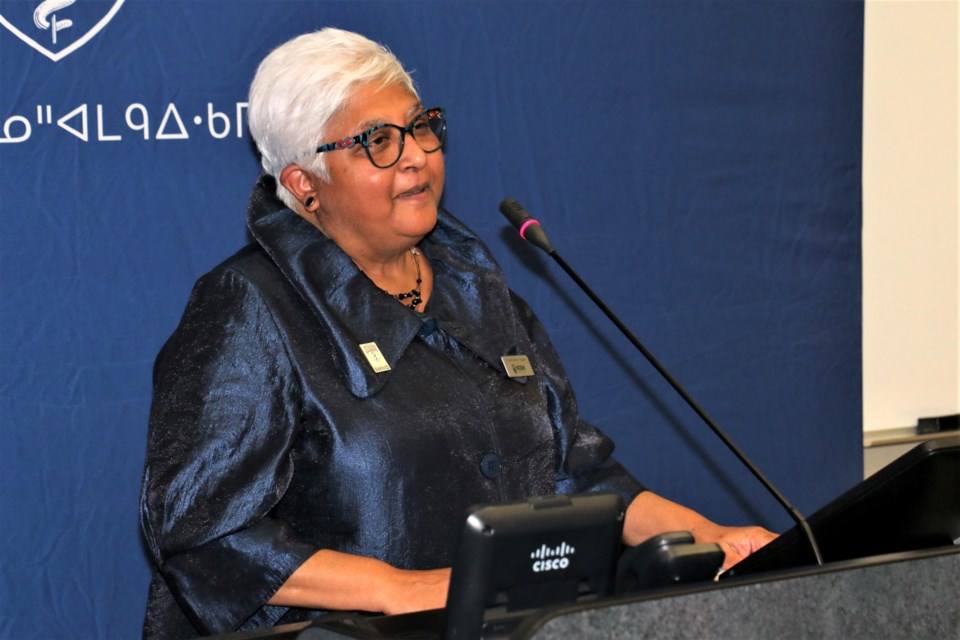NOSM University, formerly the Northern Ontario School of Medicine, is being showcased as the Ontario Medical Association (OMA) launches a new series of health care success stories.
NOSM U is the subject of the OMA's inaugural video series outlining how Ontario doctors "are finding innovative ways to solve complex challenges in the health-care system".
Dr. Sarita Verma, President, Vice Chancellor, Dean and CEO of NOSM University is highlighted in the first video where she describes the "crisis" of the doctor shortage.
"Northern Ontario is in a crisis. Like the rest of Canada we have a severe shortage of family physicians," said Verma.
She said the problems of access to health care in Northern Ontario are "magnified" four to five times more than anywhere else in Canada. Verma mentioned mental health, children's health, women's health, surgical and cancer issues.
She said NOSM is tackling the issues head on as Canada's first ever independent medical university with a mission to solve the physician shortage in the North.
"At NOSM University we recruit students from Northern and rural Ontario. Ninety per cent of our students come from those communities," said Verma.
She said the recruiting strategy is one of the successes of NOSM because the medical students have that tangible connection to where they're from.
The most recent President’s Report at NOSM shows a list of figures (Page 6) indicating that NOSM is living up to its mandates to be accountable and relevant to the region it serves.
The page shows 27 per cent self-identified Francophone students, 16 per cent self-identified Indigenous students, 48 per cent Northern Ontario urban students and 42 per cent Northern Ontario rural students.
Verma said she is happy the NOSM model for recruiting is being showcased. She said it can indeed be applied as a model in other parts of Canada.
"I think so. I mean, we've certainly been approached by Cape Breton University who are opening their new medical campus. They're affiliated with Dalhousie University, but actually I've spent time with them and worked with them and they recently reached out to understand better how to use our admissions process," Verma said.
That new medical school is expected to be open by the fall of 2025, said the university website.
Verma said NOSM uses a different type of admissions program which is inclined to select students would choose family medicine and are open to the idea of working in rural communities.
"So we're probably the most successful in the province and probably in Canada. We get an award every year actually, on this from the Society of Rural Physicians of Canada, but 50 per cent of our graduating class compared to around 20 per cent in the rest of the country do choose family medicine as a career," she said.
Verma said there has been a lot of interest in NOSM from across the country where other universities are planning to open new medical schools either on campus, or in a remote setting.
Another important role for NOSM is that it includes mandated learning about Indigenous peoples along with stressing the importance of the Francophone culture. Verma said it is just a fact of life that physicians have to be aware of the people they are treating.
She said she recently toured several communities from Kenora in the west to Temiskaming Shores in the east and several towns in between. She said the entire region is made up of small and rural communities.
"It is very heavily influenced in Indigenous competencies and cultures, mostly the Northwest, but it's also heavily influenced in the Northeast. There's a lot of francophone influence as well in the Northeast. So here's the thing. I mean, if you're going to train people, you've got to train them to work with the community and the people that they're going to practice in," Verma said.
"So we have the only four-week immersion program in the country, probably in the world, where people go. Our students spend four weeks in an indigenous community. And we have competencies we expect them to acquire," she said.
With respect to the shortage of doctors, Verma said one obvious and welcome solution is the expansion of enrolment at medical schools, something the Ontario government approved last Spring. The province said it was investing over a three-year period to add another 100 undergraduate medical school seats and another 154 postgraduate medical training seats beginning in 2024.
She said another solution is to step up licensing for physicians from other jurisdictions to make it easier for qualified doctors to set up practice in Ontario. She said it is an idea that has had success is other places and she is confident it would work in Ontario.
The full list of new video's showcasing NOSM and other programs can be seen on the OMA website.
Len Gillis covers health care stories and also mining news for Sudbury.com
